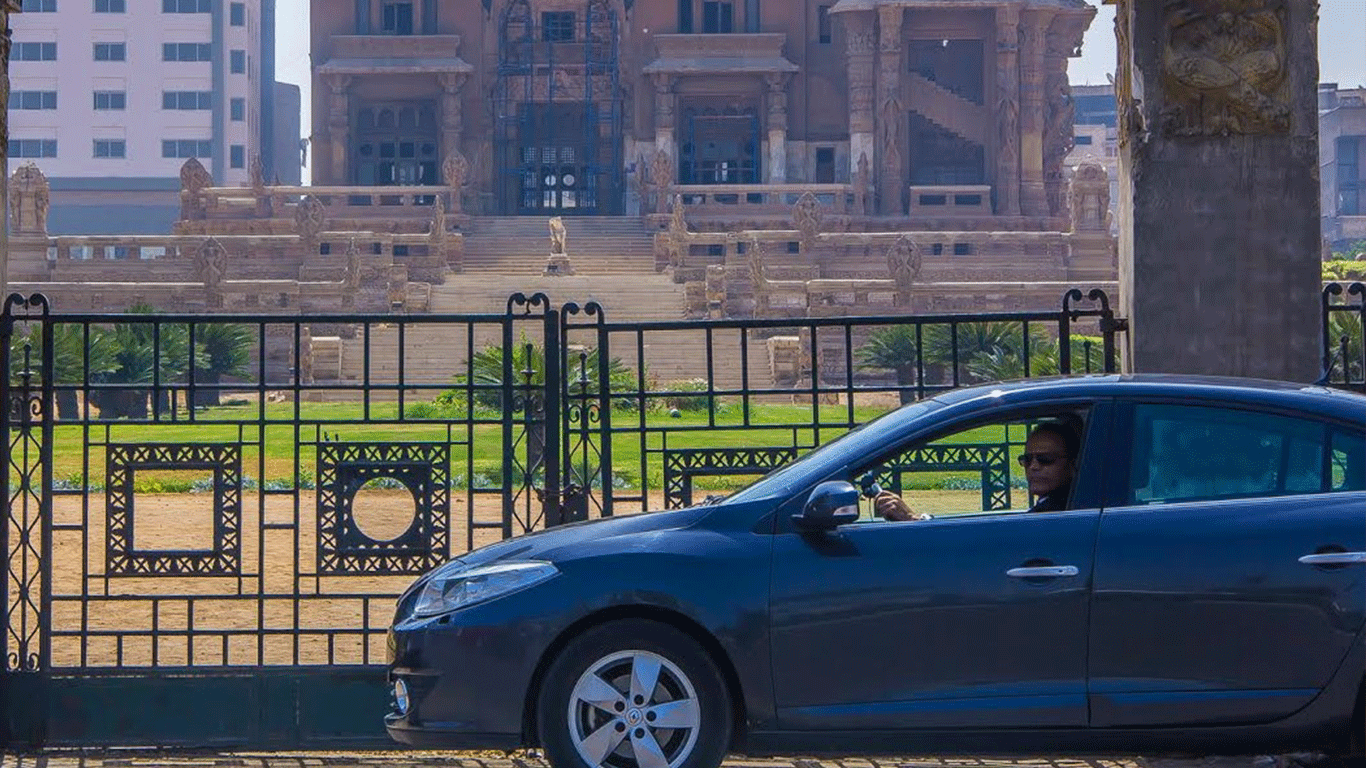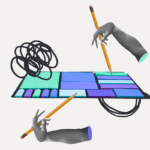Uber is a technology platform that is evolving the way the world moves. By seamlessly connecting riders to drivers through our apps, we make cities more accessible, opening up more possibilities for riders and more business for drivers. From our founding in 2009 to our launches in more than 400 cities today, Uber’s rapidly expanding global presence continues to bring people and their cities closer.
Also Read: Cairo is UBER’s fastest growing city across EMEA region
Uber in Egypt 2016: Reached over 40,000 drivers a month, from 2000 at the same time last year and Cairo remains UBER’s fastest growing city across EMEA region.
Uber in Egypt 2016 App Usage Highlights:
Most popular time for riders in Cairo is Thursday 5 to 6 pm
- Advertisement -
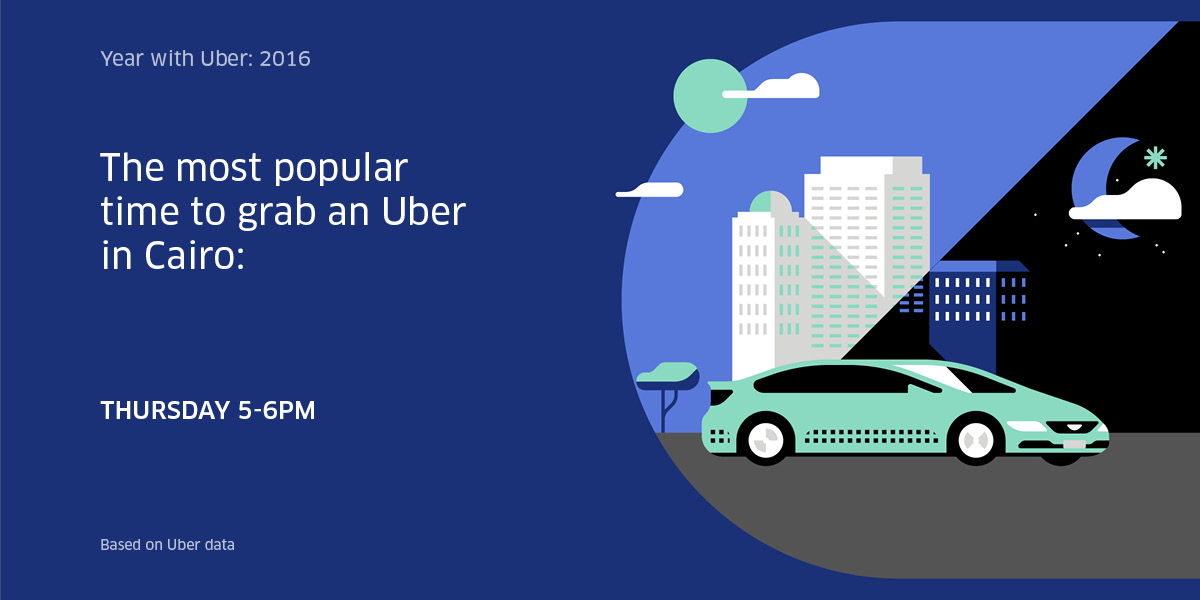
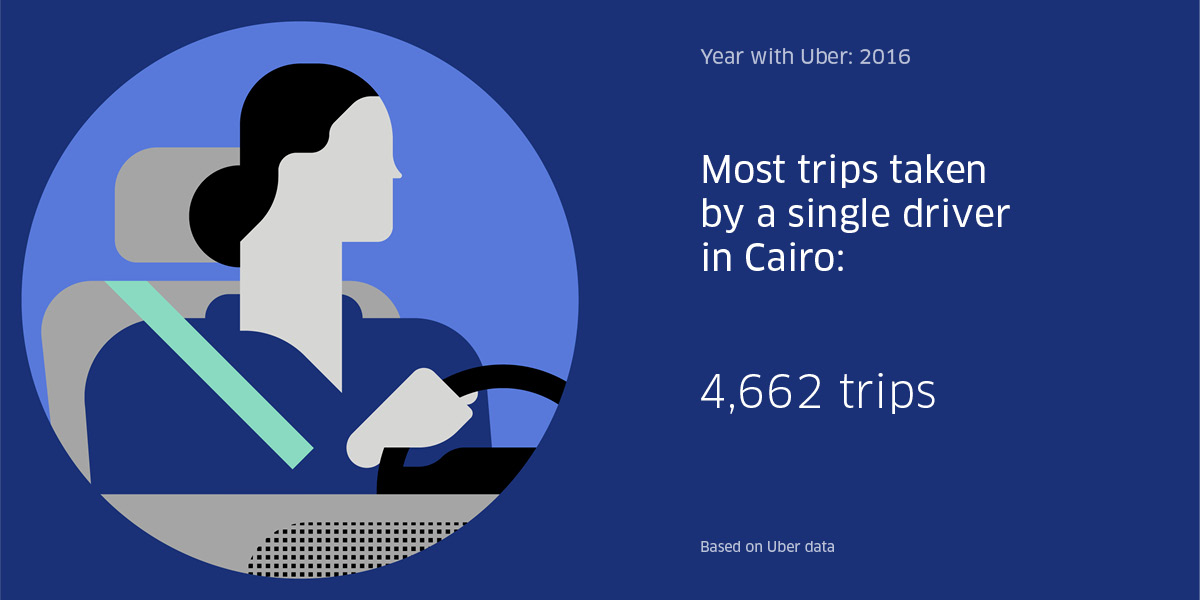
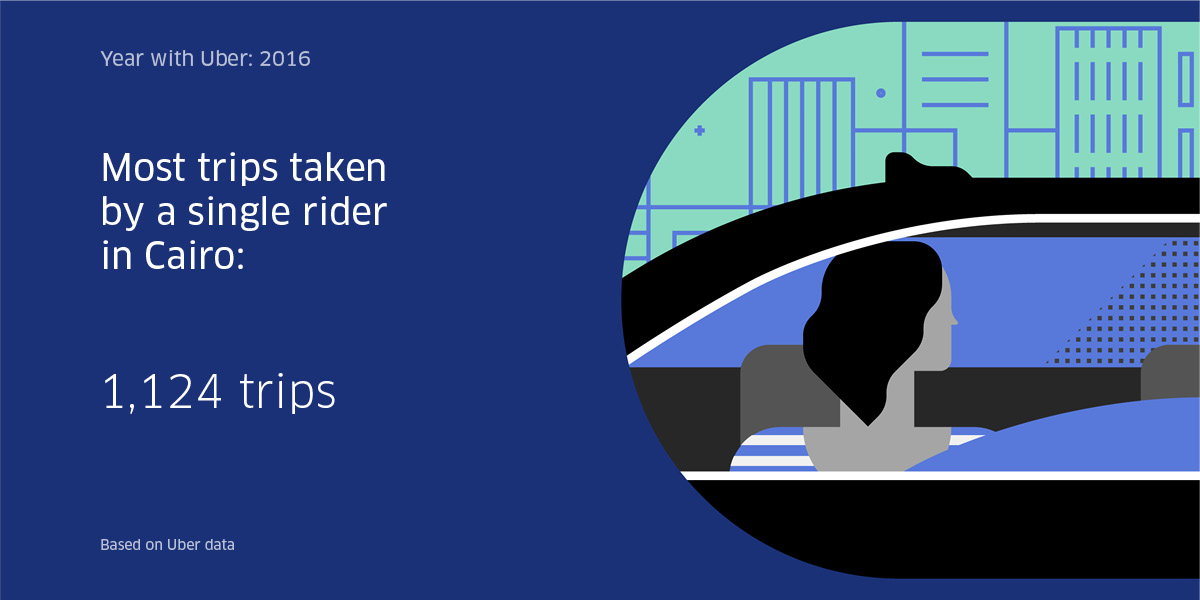
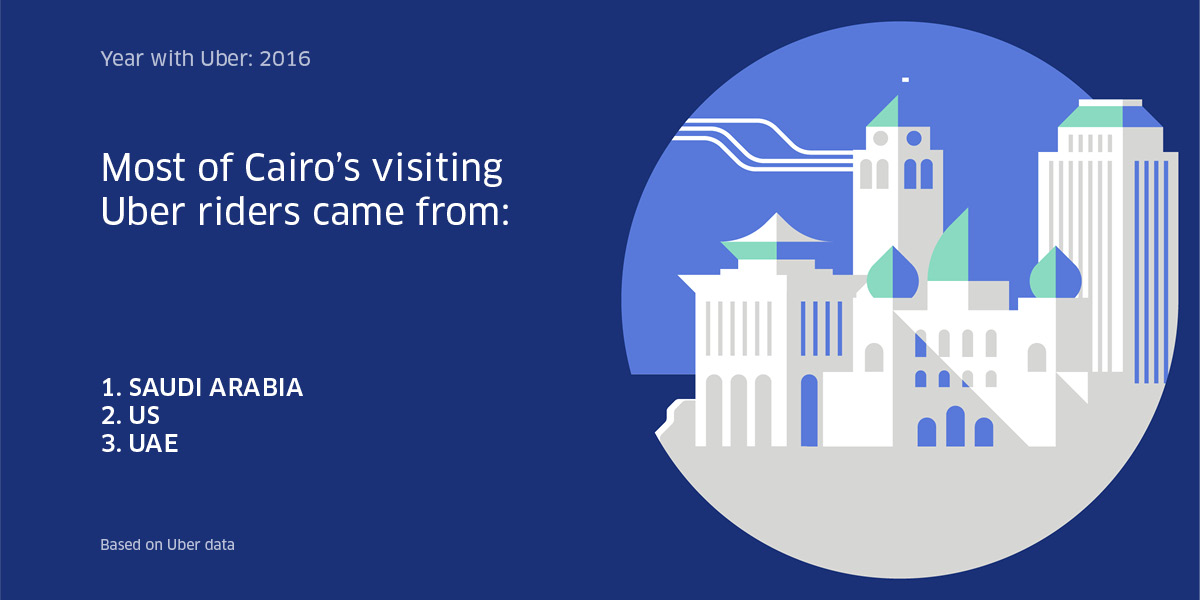
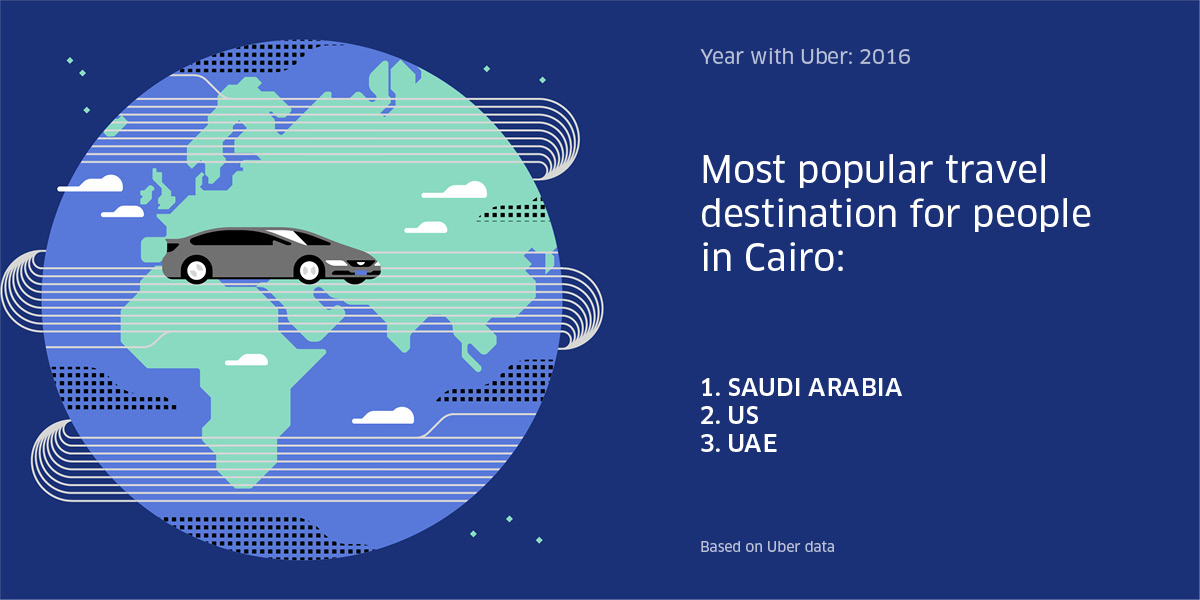
Uber Egypt 2016 Highlights
March 2016
Uber and Education for Employment Egypt (EFE|Egypt) announced the graduation of 14 partners from the Uber Partner-Driver Training Program; a program intended to equip aspiring individuals with the skills necessary to succeed as partner-drivers on the technology platform.
David Plouffe, Uber’s chief adviser and former campaign manager for Barack Obama in 2008, made his first visit to Cairo.
“The sharing economy has a lot more profound economic value today than it did a few years ago”, Plouffe said at The Future Of Work: How Technology is Changing the Business Model fireside chat with Dr. Nagla Rizk, professor of economics and founding director of the Access to Knowledge for Development Center (A2K4D) at the School of Business, The American University in Cairo. “Cairo is Uber’s fastest growing city around the world,” Plouffe added. “We’re keen to engage with government bodies, NGOs and businesses, to intensify our partnerships with them and work towards creating a system to produce the economic output we all desire: more work for more people, reduce congestion and provide safer transportation.”
He reinforced Uber’s commitment to investing EGP 2.2 billion to the MENA region, EGP 500 million of which is going to expansion in Egypt and to creating tens of thousands of jobs and entrepreneurship opportunities across the country.
June 2016
Uber rolled out cash payment option to 100% of Egypt riders
November 2016
Uber Egypt announced that their partner support center is officially one of the most visited centers globally with an average of 6,500 drivers per week. Whilst the center launched in June 2016, Uber Egypt has set a new international benchmark by receiving more than 1,000 visits of current and prospective drivers per day.
Uber launched telematics – technology sensors that now monitor safety measures taken while on the road. Using sensors that are built into smart phone technology, Uber measures data such as how many times and how hard the driver hits the brakes. Other sensors provide data on the position and movement of the driver’s smartphone. Uber drives value from the data received, and after continued analysis, shares the results with the drivers. Every driver receives warnings and one-on-one sessions to discuss these results and to learn how to avoid the mistakes that could put him/her and the rider in any dangerous situation on the road. About 10% of drivers tested have improved their driving habits in only a week. With such a rapid improvement rate, road safety could definitely be disrupted by technology.
December 2016
At the RiseUp Summit 2016, speaking on the Future of Mobility, Pierre-Dimitri Gore-Coty – Head of Operations EMEA at Uber – said: “Today ride-sharing accounts for under 4% of the miles driven globally. Morgan Stanley estimates that number will rise to more than 25% by 2030. Just imagine the possibilities that lie ahead! A better future is within our grasp—it’s one where people share rides and take public transit simply because it’s a better option to owning a car. It’s a future: where people have equal access to affordable transportation; where they spend less of their income on cars or commutes, and less time stuck behind the wheel. I genuinely hope we see this in Cairo sooner rather than later – and so far that is looking more and more like a possibility. “
